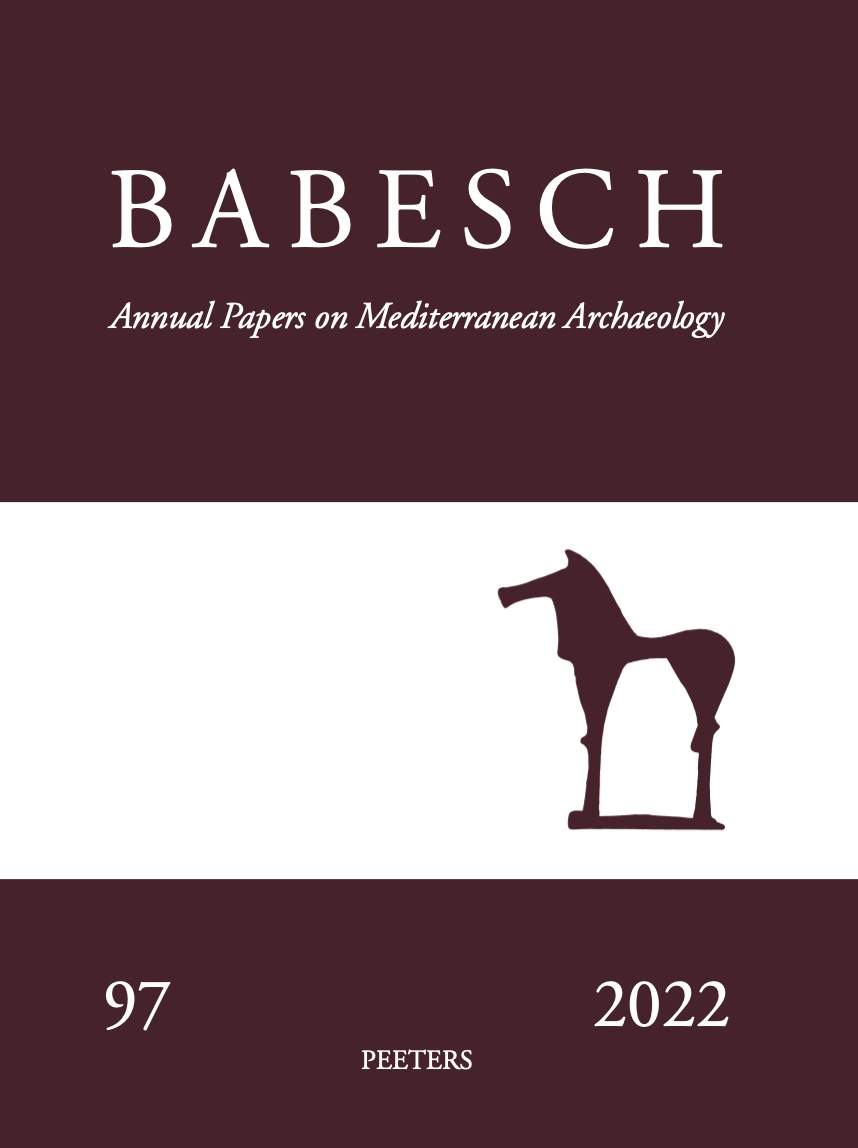 previous article in this issue previous article in this issue | next article in this issue  |

Preview first page |
Document Details : Title: Provenance and Ways of Distribution of Facial Moulds Used on Votive Heads from Tessennano Author(s): SÖDERLIND, M. Journal: BABESCH Volume: 72 Date: 1997 Pages: 115-124 DOI: 10.2143/BAB.72.0.2002268 Abstract : The frequent recurrence of long series of votive terracottas cast in worn moulds, without retouchings or any other kind of manual improvements of the blurred casts, no doubt suggests that the organisation of the ancient terracotta industry was often divided between the artistic production of the archetypes and the regular, purely mechanical serial production. Itinerant craftsmen and mould circulation are frequently referred to as plausible ways of distribution when casts from identical or derivable moulds are found at different locations, be they architectural or votive terracottas1. The fact that both phenomena are modern deductions, without any foundation in the ancient, textual sources, would call for a general evaluation of the evidence put forward so far. Such a survey is, unfortunately, too large to be included in the present article. Instead, a way of testing a special kind of votive heads from Southern Etruria for relevant evidence will be proposed. These votive heads, found en masse all over Central Italy, are eachcast from a single, frontal mould covering the facial features and the hair, while the more or less untreated back is handmade, thus offering a possibility to identify workshops and possibly even specific craftsmen. (Fig. 1a)2. Before the presentation of a few preliminary results of a larger ongoing research project, it seems, however, appropriate to begin with a short discussion regarding problems of definition and the possible ways by which mechanically derivable terracottas, found at different sites, could have been spread, from the location of the artistic production of the archetypes to the location of the serial production. |
|


